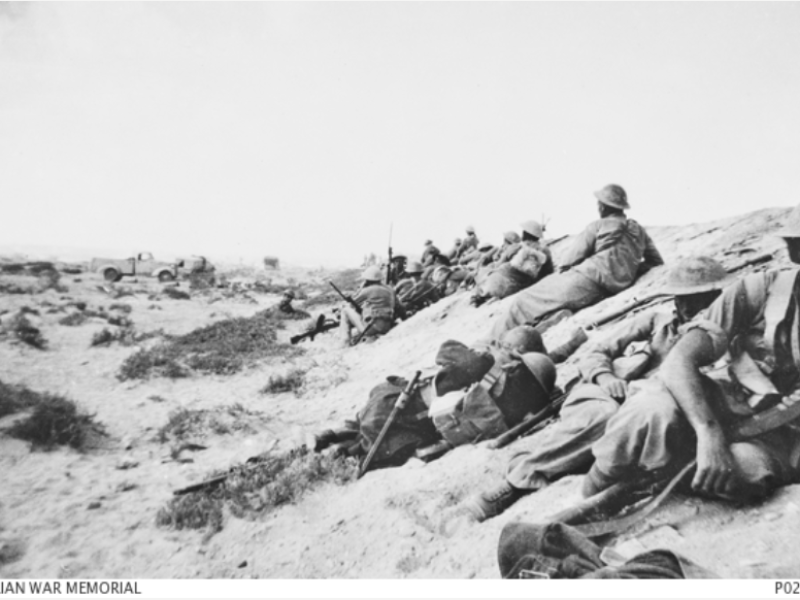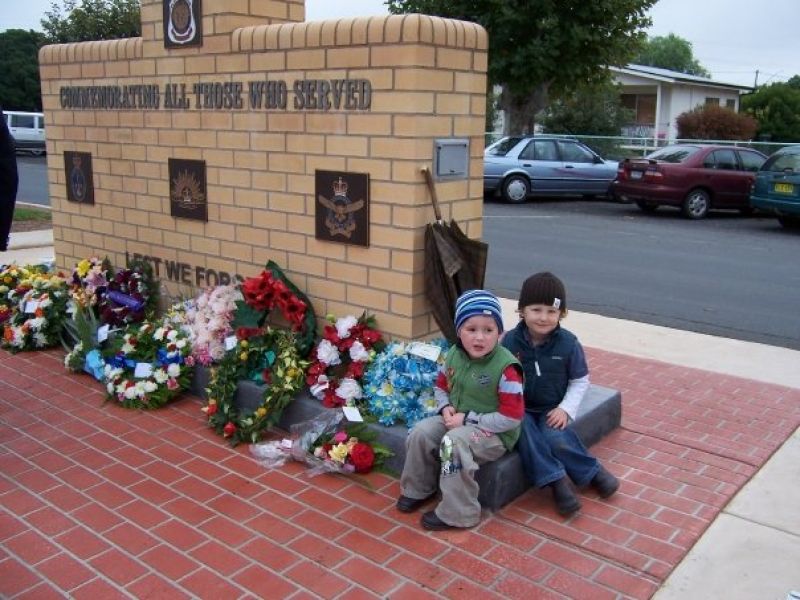Private Robert Findlay Garlick, 2/23rd Infantry Battalion
Robert “Bobby” Garlick was born on 7 July 1921 in Henty, south of Wagga Wagga, New South Wales, the son of Edward and Thomasina Garlick.
Garlick grew up alongside four brothers and five sisters in the Henty area, where he attended Yerong Creek Public School and Henty High School. He later took an apprenticeship at Papworth’s bakery in Culcairn.
In July 1940, Garlick travelled to Melbourne to enlist in the Australian Imperial Force. He was only 19 years old – too young to serve – but like many young men at the time, saw the war as an opportunity too great to miss. At the recruitment centre, he gave his age as 21, and soon began training with the 2/21st Battalion, mainly at Bonegilla, near Wodonga in Victoria.
He sailed from Sydney on 8 April 1941 for the Middle East but soon fell ill and was hospitalised. Upon release in June 1941 he continued training in the hot and dry desert conditions. During this period he was hospitalised twice more, with illness, and with a severe wrist injury.
In late April 1942, he joined the 2nd/23rd Battalion. Forming part of the 26th Brigade of the 9th Australian Division, when Garlick joined the 2/23rd Battalion it was undergoing rest and recuperation after heavy fighting at Tobruk.
In late June 1942, Garlick and his battalion began a swift transfer from their training area in modern-day Lebanon, through Palestine to Egypt. The battalion was moving with the rest of the 9th Australian Division to help meet the threat posed by German and Italian forces attacking British positions near El Alamein in Egypt.
Once in the El Alamein area, Garlick and his comrades set about establishing and manning defences, and conducting raids and patrols on enemy positions. On 12 July 1942, Garlick’s company came under heavy and sustained enemy shrapnel and mortar fire. The intense barrage was later described as “astounding” by even the battle-hardened veterans of Tobruk.
The lightly-defended Australians endured this for three and a half hours before German infantry troops commenced an attack in a series of waves. The Australians successfully defended with rifle and machine-gun fire, and once Allied artillery could be brought in, the Germans suffered extremely high losses, estimated at over 600.
Two days later, on 14 July 1942, the 2/23rd Battalion were preparing defences and laying mines on a new sector of the front, in preparation for a likely German tank and infantry attack. As they worked, they came under persistent German small arms and mortar harassment fire, causing further casualties.
Bobby Garlick was one of them.
He died of wounds sustained from enemy action, just one week after his 21st birthday.
Today, his remains lie buried in the El Alamein War Cemetery in Egypt underneath the epitaph: “Great love hath no man; he gave his life for his friends”.
David Sutton, Historian, Military History Section
Image: Soldiers of the 2/3rd Battalion dug in close to the railway embankment during the battle of El Alamein, 1942

 Australian War Memorial
Australian War Memorial